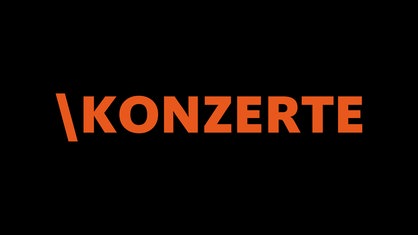
WDR Big Band Library — Notation, Scoring and Score Preparation
This guide provides practical advice for composers and arrangers who write music for the WDR Big Band. Using our collective years of experience as a guide, we have compiled some informative instructions to encourage a smooth workflow for the arranger, WDR library staff, conductors and musicians. These tips will help the arranger when writing scores and parts, and clearly define our requirements for page layout and page formatting. The instrumental capabilities for each individual musician in the WDR Big Band are also described. If you have any questions, please feel free to contact our staff.
General information:
The ‘house style’ of preparing music notation for the WDR Big Band has been established through decades of projects with many of the top arrangers in the big band world. Practicality when notating and preparing parts and scores has proven to be of utmost importance. We want to make the best use of our precious rehearsal time and fast-paced recording sessions, therefore conductors and musicians need to be able to interpret your sheet music easily and quickly. The WDR Big Band performs in many different venues, and sometimes in difficult lighting situations—either on dark stages, or brightly-lit show stages—or with an unusual distance between the player and their music stand. We need clean, legible and playable parts.
In order for your music to be played with as much care as you have given to the conception and creation of your arrangement, we request that the following guidelines be observed:
DELIVERING YOUR SCORE AND PARTS
- We need the finished PDF music files one month before the first rehearsal day.
- Please send the music to our music archive office for printing:
- wbb-noten.archiv@wdr.de
- Always be sure that the arrangement you send is the final, correct and definitive version.
- Deliver your arrangement in a folder of PDF files.
- Each part should be saved as a separate PDF file, and each individual player should have their own part. The WDR Big Band has 16 musicians (see the instrument list). If you are writing for a soloist, singer or extra player (for example, a percussionist, vibraphonist or a 5th trumpet player), they will need their own part as well.
- All parts should be transposed.
- The conductor’s score should be in a separate file.
BASIC SCORING TIPS
- Refer to the example score and parts found on this page.
- Use common font types. Please avoid jazz-fonts.
- Use a readable font size for chord symbols, lyrics, dynamics, articulations, text expressions, etc.
- Always add tempo and tempo change indications to the score and parts (ritardando, accelerando, rallentando, etc.). Make sure the font is large and readable.
- Make sure the time signatures and time signature changes are obvious and readable. (See example score).
- In addition to tempo markings, indicate the groove and style: straight 8th-note ballad, swing, swing “in 2”, ECM-style, samba, shuffled 16th-note funk, etc.
- Use multi-rests in parts and combine them where possible into one system.
- Pay attention to page turns. When possible, organize the horn parts (especially for trombones) so only two pages need to be opened at once, with time for page turns and mute changes. Although rhythm section parts are often conceived without rests from start to finish, think about the best system layout for optimal page turns. Make sure the drum parts have horn cues and necessary hits. Try to optimize page turns for D.S., D.C. and Coda sections.
- Avoid auto system breaks, line or page breaks.
- Add large rehearsal letters, plus measure numbers in the score and parts.
- Always use the same measure numbers, repeats, D.S. and coda symbols in the score and parts. For example, do not create a D.S. or other repeat marking in some or all of the parts that is not found in the score.
- Clearly indicate instrument changes in the score and parts. (See example Reed 1 part).
- In brass parts, indicate which mutes are used, and take care to give enough time for mute changes. Make sure to give enough time for any instrument changes, for example Trumpet > Flugelhorn, Trombone > Euphonium, or Bass Trombone > Tuba. Think about where brass and woodwind players might need time to breathe. (See example trumpet part).
- Indicate “Reed 1, Reed 2, Reed 3, Reed 4, Reed 5” in the upper left-hand corner of the saxophone section parts, and indicate any doubles that are played. For example: Reed 1 (ss, as, fl, cl). (See example Reed 1 part).
- Drum Parts: Indicate in the drum part what the drummer should play (tempo, groove, feel, dynamics, bar numbers, form and phrasing). Also notate important cues and lines from other parts — “What’s happening in the rest of the band?” (See example drum part). Find the balance: Give the drummer all of the most important information, but do not overload the part with unnecessary information.
- Bass Parts: Notate the bass line if this is exactly what you want to hear, for example if the bass has unison lines with bass trombone or baritone—or an integral contrapuntal ensemble part. Write chord symbols if the bassist should have some creative freedom to improvise a line. Write rhythmic hits and other ensemble cues for the bass if they are integral to the ensemble sound.
- The WDR Big Band rhythm section consists of piano, bass, and drums. There is no guitarist in the WDR Big Band. If your music specifically needs guitar, please discuss this directly with the WDR Big Band Management. If you do write for guitar, consider with great care the interplay between piano and guitar in the big band. Each player should have their own part, and a clearly defined role.
- Please avoid “copy & paste” as an arranging technique! If you do use copy & paste, make sure the notes you are pasting are really what you want the musician to play.
- For general music notation rules, refer to a definitive guidebook, such as Behind Bars: The Definitive Guide to Music Notation [Elaine Gould, Faber Music Ltd., 2003]. For jazz and big-band guidelines, refer to works like: Berklee Contemporary Music Notation [Jonathan Feist, Berklee Press, 2017], The Complete Arranger [Sammy Nestico, Fenwood Music Co., 1993], The Contemporary Arranger [Don Sebesky, Alfred Music, 1984], and Jazz Scores and Analysis [Rick Lawn, Sher Music, 2018]. Note that Jazz Scores and Analysis features scores by Vince Mendoza (WDR Big Band Composer- In-Residence) and Bob Mintzer (WDR Big Band Principal Conductor).
LAYOUT REQUIREMENTS FOR SCORES AND PARTS
When creating the layout for parts and scores, please stay within the maximum margins. Any notation or text outside of the maximum margin might not be printed, or might be too close to the binding.
Paper Sizes for Parts:
- Width: 269mm
- Height: 339 mm
- Staff Size: 8.5 mm
- Page Margins: 10 mm
Layout:
- Basically 4 bars per line, more if there is sparse notation
- Be aware of page turns for each instrument.
- Leporello style adhering w/Aslan P 045 paper glue
(You can get all materials from WDR Notenarchiv. Ask us if you would like a sample score and parts.)
Paper Sizes for Scores:
- Width: 420
- Height: 297
- Staff Size: Between 4.0 to 4.5 mm
- Page Margins: 10 mm
Layout:
- Basically 8 bars per line
WDR BIG BAND INSTRUMENTATION
Saxophone section
Reed 1: Johan Hörlen (1. Alto)
Alto, soprano, sopranino sax, Bb clarinet, flute, alto flute.
Solos on all instruments.
Reed 2: Karolina Strassmayer (2. Alto)
Alto, soprano sax, flute (1. flute), piccolo flute, alto flute, clarinet.
Solos on alto sax, flute and piccolo flute.
Reed 3: Ben Fitzpatrick (1. Tenor)
Tenor, soprano sax 1-2, clarinet 3, flute 2, alto flute 1-2.
Solos on tenor.
Reed 4: Paul Heller (2. Tenor)
Tenor, soprano sax, clarinet, bass clarinet (to low Eb), alto flute, flute.
Reed 5: Jens Neufang (Baritone)
Baritone, bass and soprano sax. Bass clarinet, contra bass clarinet, contra alto clarinet, Bb clarinet, Eb clarinet, bass flute, alto flute, flute, piccolo.
Solos on baritone and bass sax, and also bass clarinet.
Trombone section
Trombone 1: Ludwig Nuss
Trombone & Euphonium
Trombone 2: Raphael Klemm
Trombone & Euphonium
Trombone 3: Andy Hunter
Trombone, Euphonium, Bass trombone
Bass Trombone: Mattis Cederberg
Bass Trombone, Cimbasso, Euphonium, F-Tuba, Bb-Tuba
Trumpet Section
Trumpet 1: Wim Both
Trumpet & Flugelhorn (no solos)
Trumpet 2: Rob Bruynen
Trumpet & Flugelhorn
Trumpet 3: Andy Haderer
Trumpet & Flugelhorn
Trumpet 4: Ruud Breuls
Trumpet & Flugelhorn
Rhythm Section
Piano (& keys: Rhodes, Synth/Nord, Hammond) — Billy Test
Bass (double bass and 4- & 5-string bass guitar) — John Goldsby
Drums (drum set, plus only small percussion that can be played from the set, i.e. shaker, triangle) — Hans Dekker
Guitar — There is no guitarist in the WDR Big Band. In order to use guitar in your arrangement, please discuss your needs with management and the conductor. In some cases, a guitarist can be hired additionally for a specific project. Generally, arrangements should be written with no guitar part unless a specific agreement is made with management.





